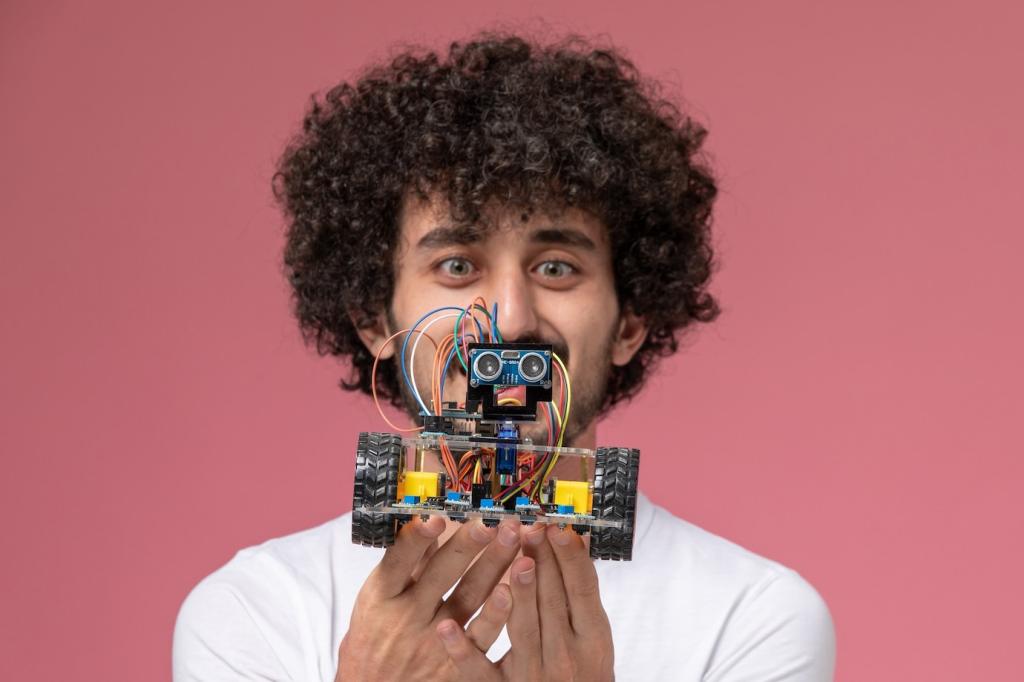Coding You Can Hold
We start with visual blocks to teach sequencing, loops, and conditionals, then introduce simple text snippets that mirror familiar logic. Invite your learner to compare both styles, and subscribe for printable exercises that make transitions smoother and less intimidating.
Coding You Can Hold
Bugs become clues, not crises. We log symptoms, isolate steps, and test hypotheses. Kids relish the moment a robot finally behaves. Share a tricky bug your child faced, and we’ll reply with a friendly checklist to hunt it down together.


